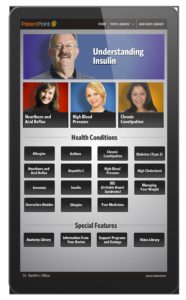Sponsored Content
 PatientPoint had the honor of sponsoring the Top 25 DTC Marketers and Hall of Fame awards at last month’s DTC National. During Hall of Fame inductee Christine Sakdalan’s passionate acceptance speech, one of her quotes really stood out, as it touched on some very relevant topics within our industry. She said: “More than ever, we have the great privilege and responsibility in healthcare to positively impact people’s lives. To make a meaningful difference in patient outcomes, we must purposefully lead with compassion and empathy, engage in relevant dialogue and foster partnership across the healthcare ecosystem.”
PatientPoint had the honor of sponsoring the Top 25 DTC Marketers and Hall of Fame awards at last month’s DTC National. During Hall of Fame inductee Christine Sakdalan’s passionate acceptance speech, one of her quotes really stood out, as it touched on some very relevant topics within our industry. She said: “More than ever, we have the great privilege and responsibility in healthcare to positively impact people’s lives. To make a meaningful difference in patient outcomes, we must purposefully lead with compassion and empathy, engage in relevant dialogue and foster partnership across the healthcare ecosystem.”
These values that Christine noted need to be at the forefront of decision-making during planning season. Lead with empathy. Engage in meaningful dialogue. Foster partnership. If your marketing strategy is built on these foundational tenants, and delivers relevant messaging to the patient at the time he or she needs the information the most, a positive impact is a near guarantee.
I see proof of this daily as I work with our client partners to create plans that enable their brands to be a part of the important discussions between patients and physicians. Sharing compelling testimonials, savings offers, clinical trial results and other similar information in the doctor’s office offers patients the guidance and empowerment they need at this time, making your brand a true partner to not only patients but their healthcare providers as well.
With all the news about consumers losing trust in brands today, it seems now more than ever is the time we collectively focus our efforts on what truly matters the most—the patient. This may involve a change from your tried and true marketing tactics, instead thinking outside the box to focus more on the channels, like point of care, that enable you to truly connect with patients and physicians and, as Christine so well noted in her speech, make a meaningful difference in patients’ lives. PatientPoint can help you do just that.










